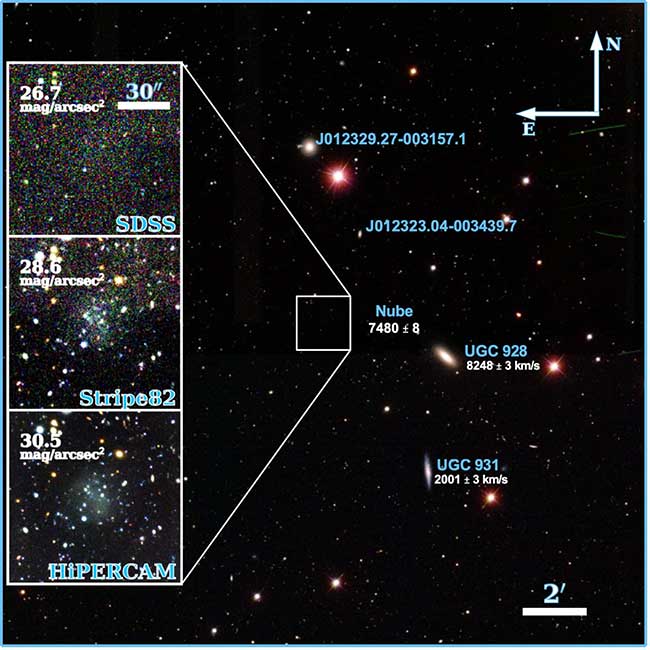“The Phantom Galaxy” Nube is the largest ultra-diffuse galaxy ever recorded in the history of astronomy.
According to Universe Today, the Nube galaxy is so faint that the renowned Sloan Digital Sky Survey (SDSS) missed it. However, scientists were fortunate when another survey program named IAC Stripe82 Legacy Project accidentally detected it, revealing an almost transparent object.
The research team, led by Dr. Mireia Montes from the Institute of Astrophysics of the Canary Islands (IAC – Spain), analyzed and confirmed that Nube is primarily composed of dark matter.

The Nube galaxy is marked by a solid black square in the overall observational image, only appearing faintly in more detailed observations – (Photo: Montes et al).
“This phantom galaxy” is a dwarf galaxy that is “almost dark,” with a mass equivalent to the Small Magellanic Cloud, one of the satellite galaxies of the Milky Way, which is home to our planet.
The results come from additional observations using the Green Bank Telescope (located in the United States), revealing that the “phantom galaxy” is approximately 350 million light-years away from us.
It is an extremely diffuse galaxy, weighing 26 billion times more than the Sun, yet its total stellar mass is only 390 million times that of the Sun, indicating that a dark, invisible entity occupies it.
This invisible entity is dark matter, a hypothetical type of matter believed to make up a significant portion of the universe, even surrounding Earth in ways we cannot see or perceive.
Half of Nube’s mass is spread across a region of space 22,000 light-years wide and is the largest ultra-diffuse galaxy known to scientists.
According to the authors, the study of the “phantom galaxy” Nube will provide a fantastic opportunity for scientists to answer questions about dark matter.
At the same time, it offers hope that many more dwarf galaxies like the “phantom galaxy” exist, just that we have yet to notice them, as they are too faint and nearly transparent like a ghost.




















































